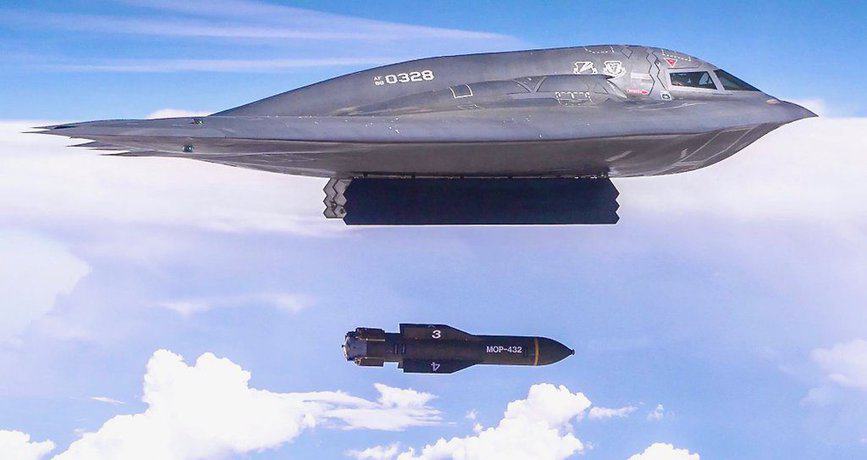The US arsenal has an infinite number of bombs of various types and variants for a multitude of missions. At SDB, Paveway and JDAM/LJDAM, as well as the Mk.80 series dumb bombs, are the best known and most commonly used.
However, there is a certain “special” bomb, carried exclusively by the most expensive aircraft in the US fleet, the B-2 Spirit bomber. Its name: GBU-57 Massive Ordnance Penetrator (MOP). A 30-pound (13.620 kg) bomb, six meters long, made to hit important targets protected by extremely reinforced bunkers.
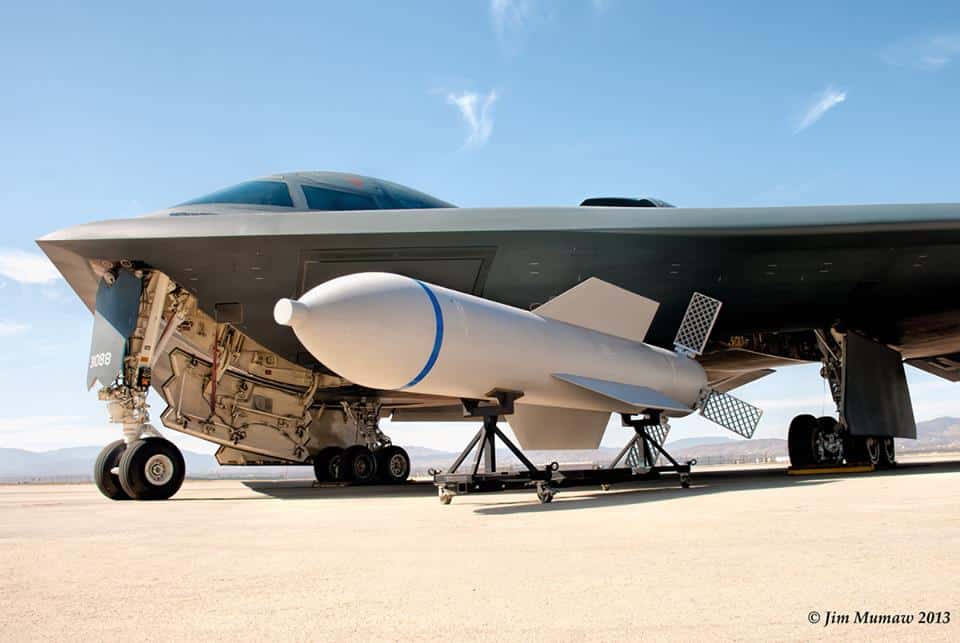
The history of the MOP begins in mid-2002, when the companies Lockheed Martin and Northrop Grumman (manufacturer of the B-2) were working together to develop a bomb of this type. However, budget problems paralyzed the project.
In 2003, the US and its coalition invaded Iraq claiming that Saddam Hussein's regime possessed and would use weapons of mass destruction. Analysis of penetrating munitions used in the war, such as the BLU-109, revealed that its capacity was insufficient for the missions that the USAF would need to fulfill.
Thus, the Air Force, through the Directorate of Ammunition of its Research Laboratory (AFRL) contracted Boeing in November 2004 to develop, test and manufacture the GBU-57 MOP. This first contract was valued, at the time, at US$ 20 million.
Tests
In March 2007, the first static explosion tests of the GBU-57 warhead were carried out. The so-called “static tunnel lethality tests” successfully took place in a Defense Threat Reduction Agency (DTRA) tunnel at the White Sands Missile Range in New Mexico.
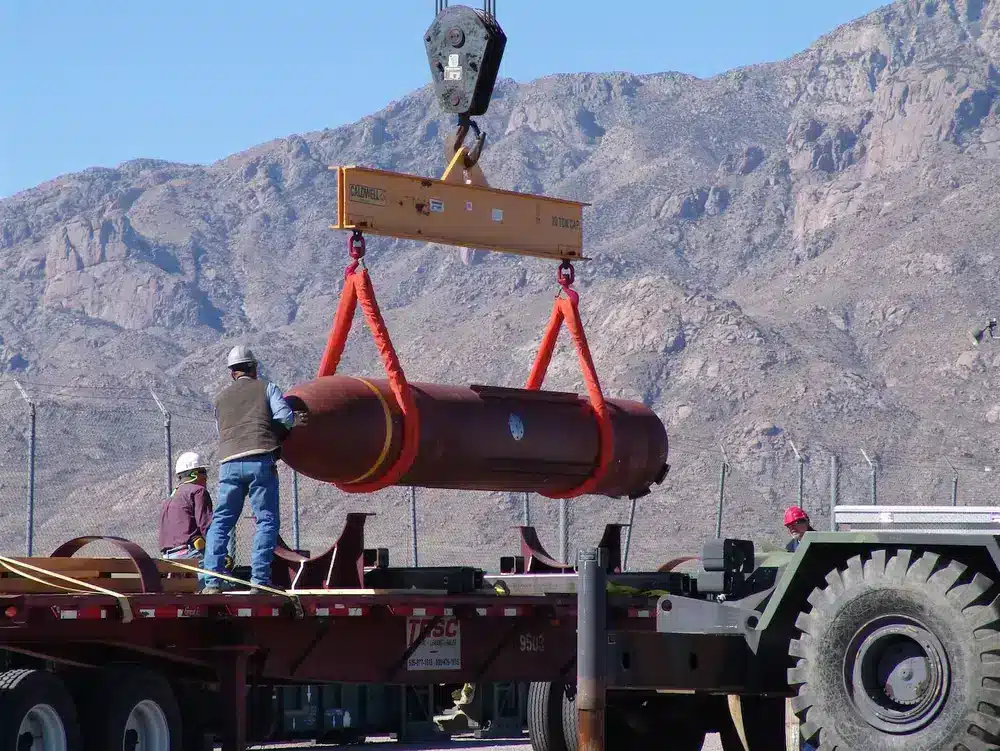
Once this step was completed, flight launch tests were carried out with the B-52, between November 2007 and July 2008, to assess the bomb's penetration and lethality capabilities. The GBU-57 was tested against DTRA bunkers and tunnels, also at White Sands.
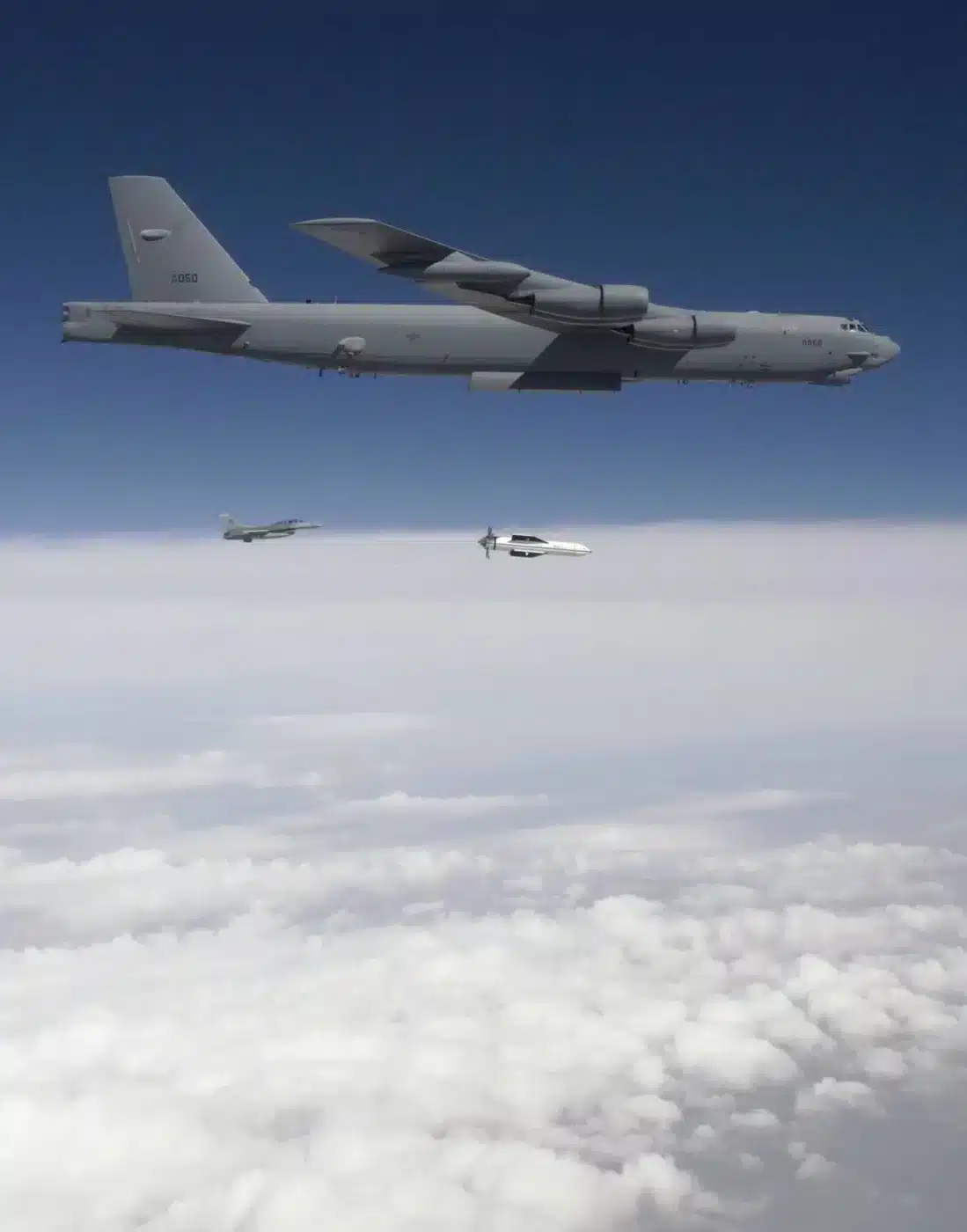
Despite being dropped by the B-52 during trials, the GBU was not integrated into this aircraft.
In service with the B-2
Starting in July 2007, Northrop began to integrate the MOP into its launch pad, the B-2 Spirit. In September 2011, Boeing began deliveries of the first 20 operational units of the GBU-57, acquired by the USAF Global Strike Command (AFGSC).
The GBU-57 weighs almost four tons more than the GBU-43/B Massive Ordnance Air Blast – known by the nickname “Mother of All Bombs” – and the B-2 can carry two at once, one in each bay. of armament, totaling 60 pounds of payload.
See in video below:
Its original BLU-127B warhead contains 5300 pounds of explosives, enclosed in a capsule made of an iron-cobalt alloy, specially developed for penetration of reinforced concrete. The A/B, C/B and D/B variants brought updates that were not revealed to the public.
In 2016 the USAF already had some units of the updated GBU-57E/B version. As well as the warhead itself, there are no details about the new features of this improved variant, but the USAF claims that its penetration capacity has been increased. The fuse's resistance would also have been improved to ensure that the explosion does not occur before the bomb reaches the target. At the same time, the USAF does not say how many GBU-57s it has in its inventory, only that it operates the A/B, C/B and E/B versions.
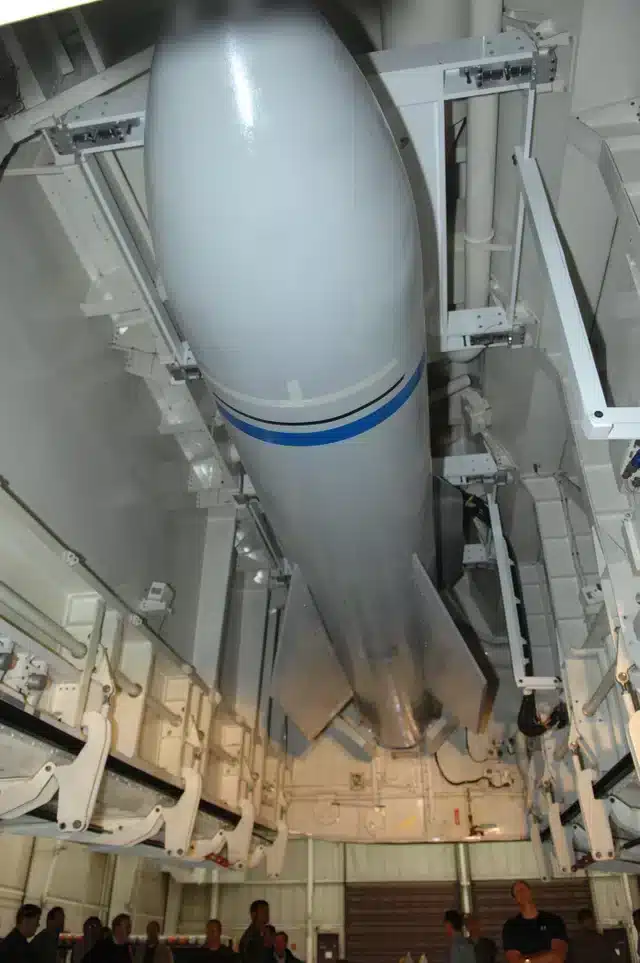
Having said all that, we return to the main feature of the GBU-57: the ability to destroy targets in bunkers. According to the Global Security and The War Zone portals, a GBU-57 can traverse almost 61 meters of reinforced concrete. The second site also points out that because it is guided by GPS, a B-2 can attack exactly the same place with two GBU-57s, increasing the penetration and destruction capabilities of high value targets, such as deposits of weapons of mass destruction and command and control centers.
However, this capability did not come cheaply. The development cost of the GBU-57 MOP is between US$ 400 and 500 million, and its production price per unit is around US$ 3,5 million.
Just to give you an idea of costs, a 10-pound, laser-guided GBU-2000 bomb can cost $26.000. A JDAM kit, also guided by GPS, is around US$ 22.000.
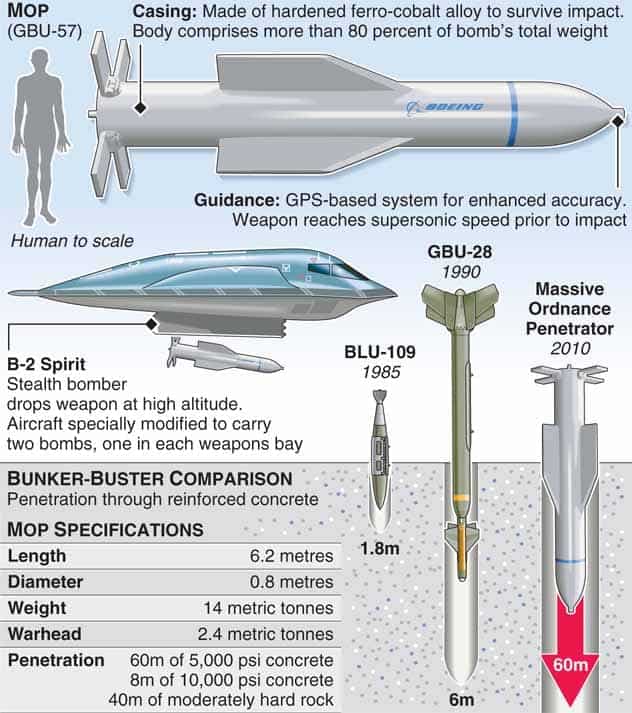
Even so, it is important to highlight that the bombs of the Paveway, JDAM and new and smaller SDB series have an infinitely more common and flexible use, being able to be carried by almost all US fighters, for example.
The GBU-57 MOP has a very specific job, in complex missions that involve the destruction of targets of great importance, of interest to the US and its partners, which justifies its high value, its strategic characteristic and its exclusivity of operation with the B -2, a radar-stealing aircraft.
Do you want to receive our news firsthand? Click Here and be part of our Group on Whatsapp or Telegram.

